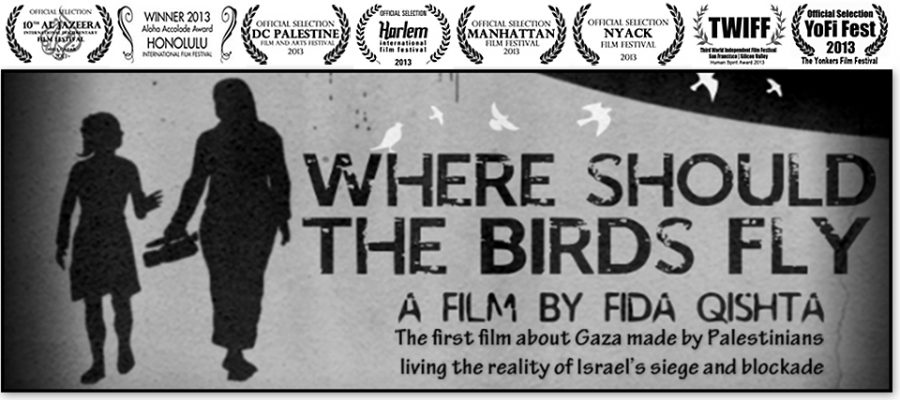Fida Qishta is a Palestinian filmmaker and director of “Where Should the Birds Fly,” the first film about Gaza made by Palestinians, who live the reality of Israel’s siege and blockade. Qishta screened her documentary last Friday in the 248 North 3rd Street building, and offered viewers a Q&A portion of the presentation after the screening. Qishta’s footage, although extremely impressive, was difficult to watch as it graphically exhibited the violence that the citizens of Gaza face. Qishta has been touring the country and spreading her documentary to many film festivals.
Although the attacks on Gaza have occurred hundreds of times in the last decade, Qishta marks December 27, 2008 as the pivotal Israeli attack that came with zero warning. She was one of the first journalists on the scene. In her discussion after the screening, she mentioned how she did not originally consider herself a filmmaker, she was simply “taking footage of what was going on in her neighborhood.”
The moments she captured that illustrate the incredible traumas done to the citizens of Gaza, particularly children, are haunting. One of the most powerful moments in the film is when Qishta asks a wailing, 15 year-old, Palestinian boy in the hospital, if she can film his gaping wounds caused by one of the many Israeli air strikes. The boy originally said no, but then asked Qishta, “Will people see this? Will they feel the pain I’m feeling?” After Qishta said yes, the boy agreed to be filmed.
The timing of the screening was all the more disturbing, as we know from the news that this Israeli-Palestinian conflict continues to rage on today. However, it was astonishing how the themes of politics and terrorism were, for the most part, absent from Qishta’s film. In the post-screening Q&A, a student inevitably asked Qishta if the Palestinians she worked with had opinions on Hamas, a Palestinian-Islamic organization that is designated as a terrorist organization by multiple countries. Qishta responded saying that Hamas is the strongest part of many different sectors of the Palestinian nationality, and that many people simply write off Gazaas Hamas.
However, Qishta repeatedly assured the group that her film is not about manipulating viewers to choose sides. She commented on how the media today likes to form harsh lines and strict barriers when it comes to these conflicts. Qishta’s film is not concerned with “sides” and she understands that in these cases of war, the part does not represent the whole. For example, Qishta mentioned in the film how the Israelites justified their attacks as “retaliation” against Gaza for their rocket attacks, but Qishta’s only motivation is to make viewers think about what life would be like if this was the situation they were in, and the unrest they would feel.
Towards the end of the film, Mona, a 10 year-old victim of the Israeli strikes and one of the main subjects of the film says, “I really love the birds because they have freedom, while we are locked in a cage of sorrow” Mona said. In watching this film, I experienced for the first time a representation of this conflict that was not entirely Enemy v. Enemy. Qishta strives to depict the facts of these Palestinian citizens’ everyday lives, and to make viewers think about the situation in a less argumentative, confrontational way.




































































































